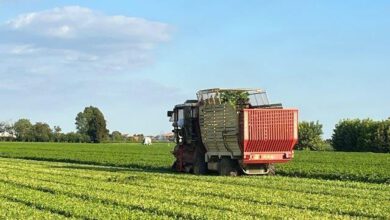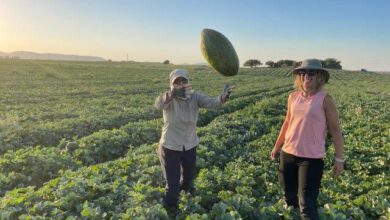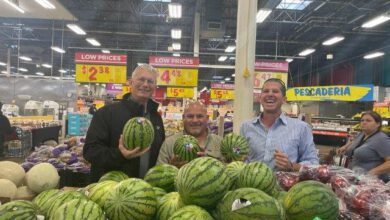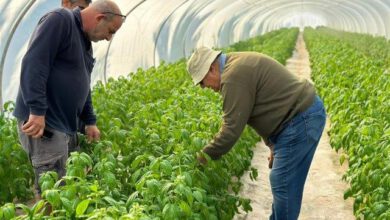Big Red Watermelon with Seeds – That’s what the Market Wants
The most selling watermelon varieties in Argentina are Riverside and Alexander known locally as La Valla and Bariga, respectively
An interview with Mr. Dario Fusari, from “ Semillas Fusari” “Origene Seeds” distributor in Argentina
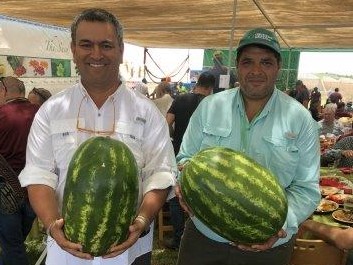

mr. fusari is one of origene seeds distributers in argentina. for the past six years, he has been selling seeds of seeded (diploid) watermelon to local growers and farmers.
according to fusari, the most selling watermelon varieties in argentina are riverside and alexander known locally as la valla and bariga, respectively.
“the watermelon sowing season,” says fusari, “goes on for approximately six months; starting in the north around may – june and following through to december, in the south.
harvesting, he continues, “begins mid – october in the north and ends in mendoza in march when the weather starts cooling down. most of the watermelon produce in argentina is for local consumption.” “we have a good relationship with origene seeds,” he tells us, “because they supply the market’s demands, and meet all its needs: the consumers get big, deep red, sweet fruit whilst the growers receive vigor plants – essential especially for the north because solar radiation there is fierce, and the plants need to be strong enough to protect the fruit from heat stroke.”
to produce uniqueness and offer the growers advantages over other companies varieties, origene seeds, hand in hand with fusari, are changing the argentinian market. namely, they introduce new types with superior yield and quality, yet they also give the market what it wants.
“the change we are advancing,” he says, “has several dimensions: short growing seasons, working with a local team, and introducing varieties that are diseases resistant.”
in argentina, origene seeds prefer working with fusari and his team who are well-acquainted with the people, the market, and understand the needs of all the players involved. fusari tells us how he drives thousands and thousands of kilometers to see the growers all over the country and keeps in touch with them. it is no wonder, therefore, that fusari sells more seeds than other international seeds company.
what has tradition got to do with the amount of produce?
“well,” says fusari, “culture in argentina has an important role that effects using ag-tech and in turn affects the yield. there is a difference between growers in the north and those in the south. in the
north of argentina, growers sow the seeds and wait for the rain to come.
because they believe it all depends on god, there are no irrigation technologies. to compare,” he explains, “in the center and south, growers understand the significance of drip irrigation, and the results speak for themselves – the north’s yield is 40 tons per hectare while the center and south harvest 100 tons per hectare, just because they use drip irrigation.”
mr. fusari reiterates the value of distributor-growers-market relationships and gives an example. “another company that tried introducing seedless, darker varieties had failed because the market is still conservative and change-resistant.” nonetheless, origene seeds, together with fusari, are making measured changes to gradually introduce new, stronger types that are less prone to diseases and have shorter seasonal growth cycles. “these traits,” concludes fusari, “offer the growers we work with not only added value but also advantages that are unavailable for other growers.”

